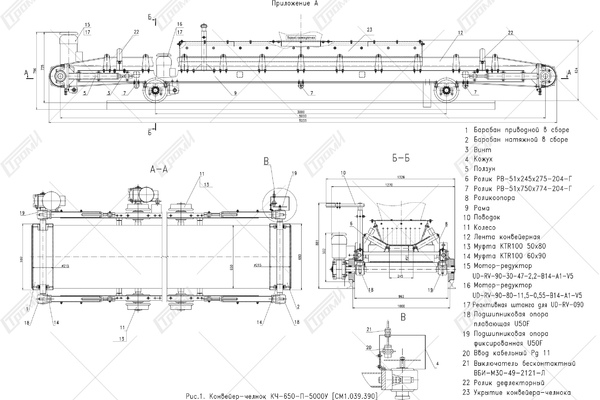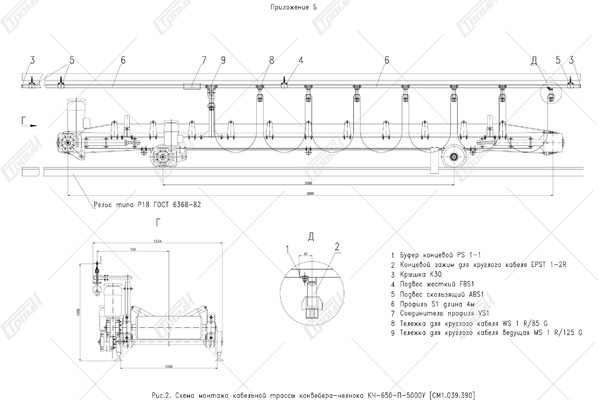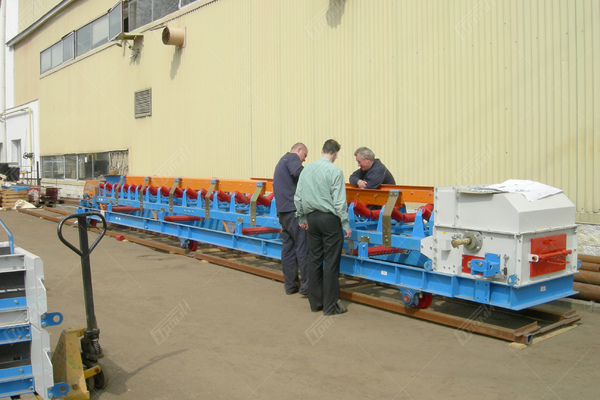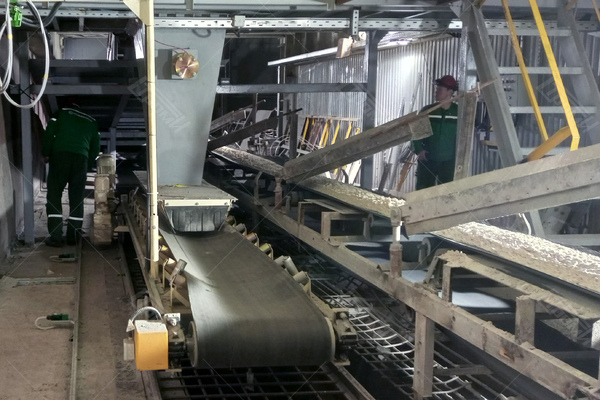Shuttle conveyor
USING
The shuttle conveyor is specifically designed for the efficient transportation of various types of materials, including loose powdery, fine-grained, and lumpy substances. It is capable of handling fractions up to 30 mm in size and is particularly suitable for materials that do not tend to cake or stick together. The maximum bulk weight that the conveyor can handle is 2 g/cm³. It is designed to operate in a horizontal position within production premises, with an angle of natural slope not exceeding 60°. The conveyor is also suitable for operation within a temperature range of -20° to 60°, ensuring versatility across different environments. The actual capacity of the conveyor depends on factors such as the properties of the transported material and the specific transportation conditions, which are carefully considered during the design process.
DEVICE AND PRINCIPLES OF FUNCTIONING
The shuttle conveyor functions as a continuous conveying device, moving seamlessly along an intra-workshop rail track. This design allows for smooth and uninterrupted material transport, enhancing productivity and workflow efficiency within the production facility.
Working bodies of the conveyor:
– A continuous belt serves as the primary component responsible for carrying the load during transportation. The rotational motion of the drive drum is converted into translational motion of the belt through friction between the belt and the drive drum. Tensioning screws located at the tail end of the conveyor ensure proper tension of the belt. The upper part of the belt is supported by trough roller supports, while the lower part runs on straight rollers. The drive drum is powered by a motor reducer, which is securely attached to the drive drum shaft.
– The wheels play a vital role in moving the conveyor along the rail track. The drive wheelset is driven by a geared motor that is attached to the drive shaft of the wheelset, enabling smooth and controlled movement of the conveyor.
– The conveyor shelter, designed as an elongated box, is equipped with rubber baffles parallel to the movement of the conveyor belt. It also features rubber aprons covering the entrance and exit points of the box, perpendicular to the conveyor belt. The shelter, which is not directly connected to the conveyor, is attached to the hopper responsible for feeding material onto the conveyor. An intermediate hopper facilitates the connection between the shelter and the conveyor, ensuring efficient material transfer.
– Deflector rollers are strategically placed to prevent the belt from drifting away from the conveyor axis, maintaining its proper alignment and stability throughout the operation.
– The cable cart kit is responsible for moving the cable along the profile, in sync with the motion of the conveyor. This enables the seamless transfer of power and control signals along the conveyor system, ensuring effective communication and functionality.
technical specifications
| Parameters | Values |
|---|---|
| Belt width, mm | 650 |
| Length between drum axes of a power-drive station and tension station, mm | 5000 |
| Capacity for material with a bulk weight of 1,75 g/cm³, t/h (m³/h) | 63 (36) |
| Belt speed, m/s | 0,53 |
| Railroad rail type GOST 6368 – 82 | R 18 |
| Track width on the inner sides of the rail heads, mm | 1000 |
| Conveyor running speed, m/s | 0,13 |
| Rotation frequency of droving drum, rpm | 47 |
| Rotation frequency of axle drive shaft, rpm | 11,5 |
| Driving drum diameter, mm | 215 |
| Tension drum diameter, mm | 215 |
| Wheel diameter, mm | 215 |
| Tensioning device type / tension length, mm | screw / 150 |
| Electric power supply voltage, V | 380 |
| Electric energy input of driving drum, kW | 2,2 |
| Gear motor electric energy input of axle drive shaft, kW | 11,5 |




